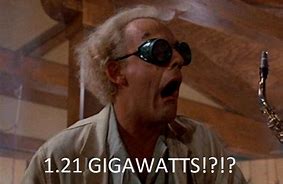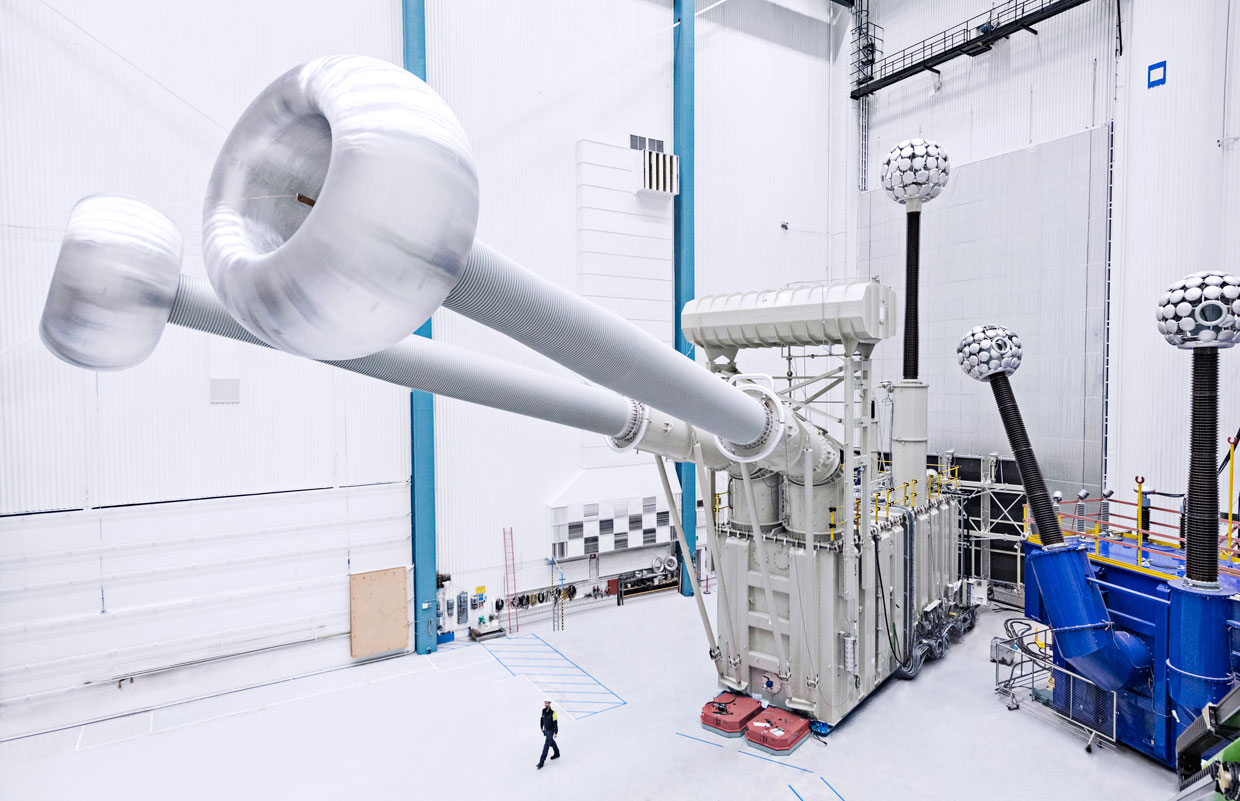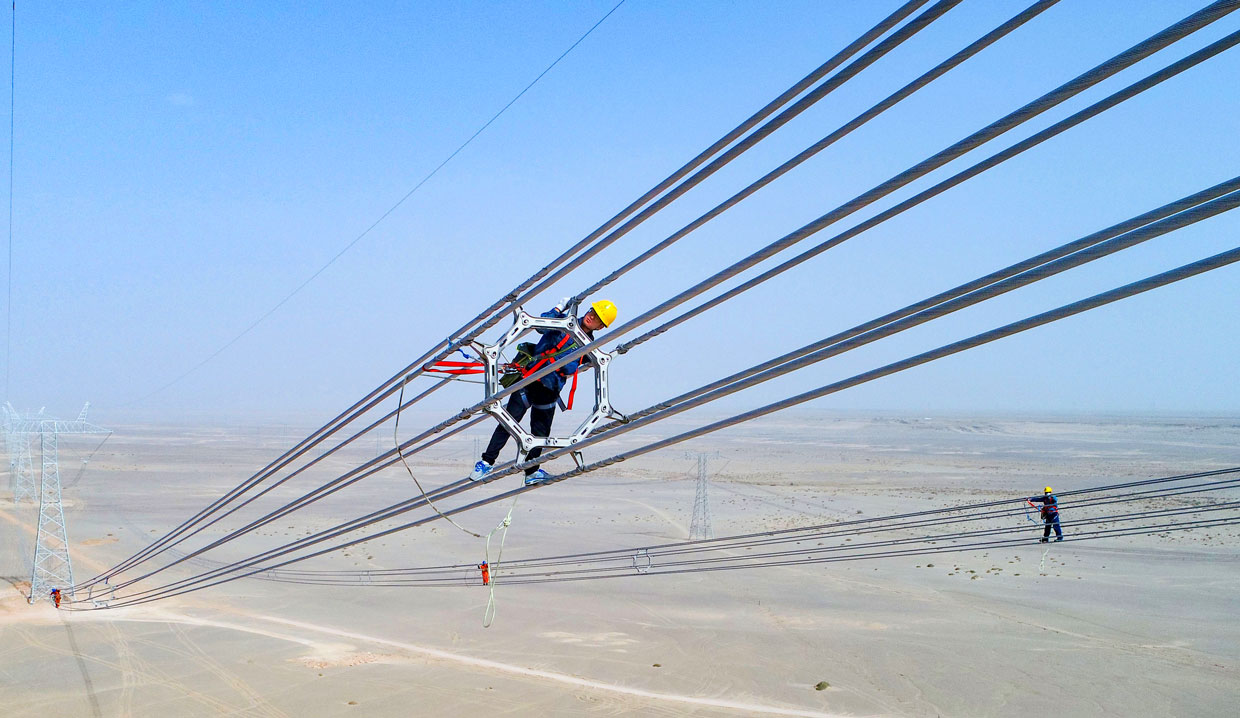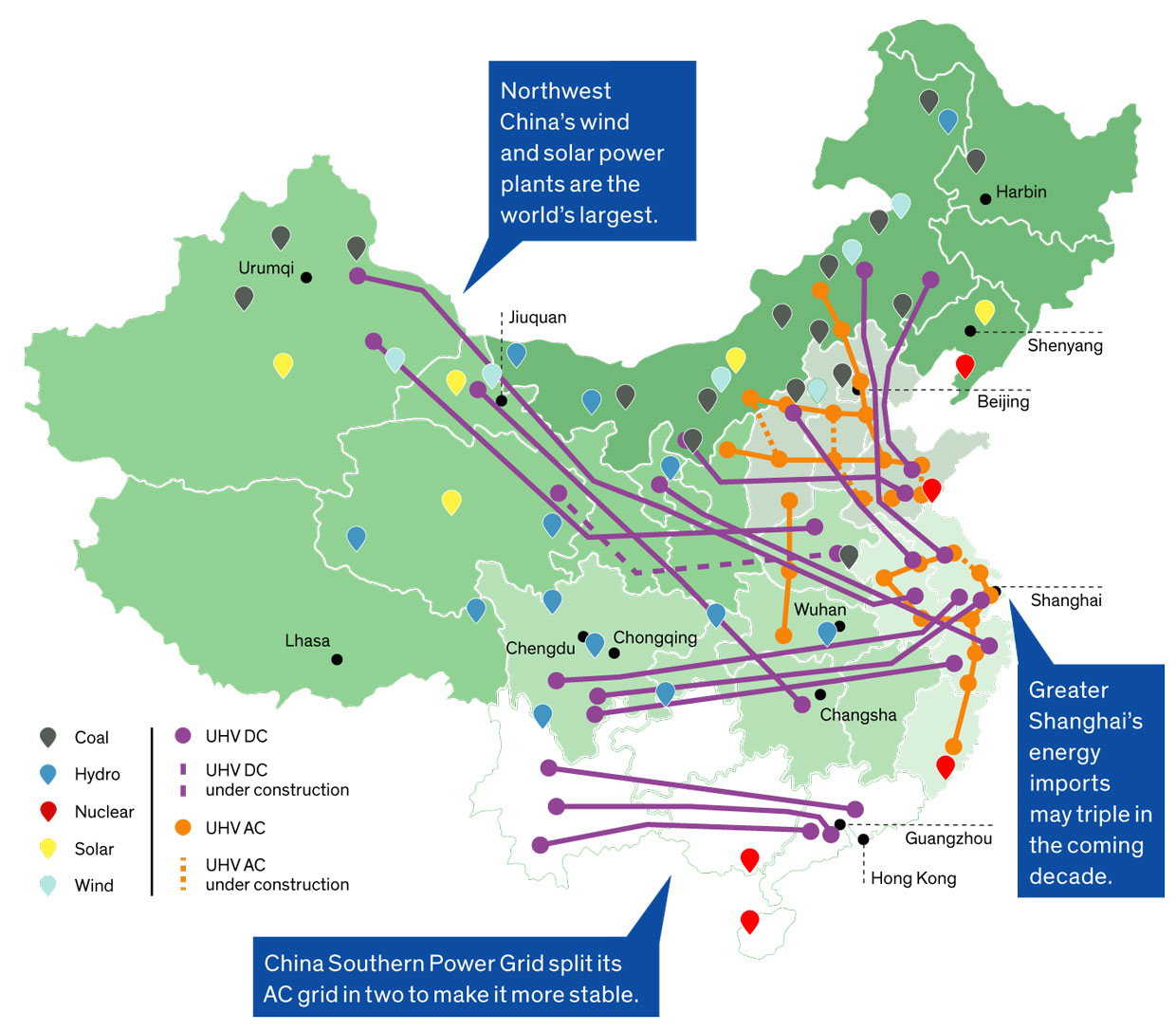It looks like you're using an Ad Blocker.
Please white-list or disable AboveTopSecret.com in your ad-blocking tool.
Thank you.
Some features of ATS will be disabled while you continue to use an ad-blocker.
share:
Electricity from the region’s wind turbines, solar farms, and coal-fired power plants arrives at the station as alternating current. Two dozen 500-metric-ton transformers feed the AC into a cavernous hall, where AC-DC converter circuits hang from the 28-meter-high ceiling, emitting a penetrating, incessant buzz. Within each circuit, solid-state switches known as thyristors chew up the AC and spit it out as DC flowing at 800 kilovolts.
From here, the transmission line traverses three more provinces before terminating at a sister station in Hunan province, more than 2,300 kilometers away. There, the DC is converted back to AC, to be fed onto the regional power grid.
China’s Ambitious Plan to Build the World’s Biggest Supergrid
China has a cutting edge power grid that puts most all of the worlds power grids to shame. Transmitting the power as DC is the smartest way to go. The US is using century old methods in its grids.
I hope China is using components that are hardened against EMP and CME with these massive runs of cable. This is an interesting article and really illustrates how far ahead of most countries China is growing as it develops.
edit on 23-2-2019 by LookingAtMars because: (no reason given)
a reply to: LookingAtMars
I know here in bonny Scotland our gooberment pay the electricity-producing wind farms/companies not to produce power at certain times, down to the inadequacies and inability to transmit power of our national grid to the tune of 100 of millions of £££££ each year.
A nation the size of the UK as well, could essentially upgrade their electrical grid, for a pittance compared to some others.
I know here in bonny Scotland our gooberment pay the electricity-producing wind farms/companies not to produce power at certain times, down to the inadequacies and inability to transmit power of our national grid to the tune of 100 of millions of £££££ each year.
A nation the size of the UK as well, could essentially upgrade their electrical grid, for a pittance compared to some others.
originally posted by: LookingAtMars
Electricity from the region’s wind turbines, solar farms, and coal-fired power plants arrives at the station as alternating current. Two dozen 500-metric-ton transformers feed the AC into a cavernous hall, where AC-DC converter circuits hang from the 28-meter-high ceiling, emitting a penetrating, incessant buzz. Within each circuit, solid-state switches known as thyristors chew up the AC and spit it out as DC flowing at 800 kilovolts.
From here, the transmission line traverses three more provinces before terminating at a sister station in Hunan province, more than 2,300 kilometers away. There, the DC is converted back to AC, to be fed onto the regional power grid.
China’s Ambitious Plan to Build the World’s Biggest Supergrid
China has a cutting edge power grid that puts most all of the worlds power grids to shame. Transmitting the power as DC is the smartest way to go. The US is using century old methods in its grids.
I hope China is using components that are hardened against EMP and CME with these massive runs of cable. This is an interesting article and really illustrates how far ahead of most countries China is growing as it develops.
800,000 volts??? That means they need at least 1.2 million volt thyristors, which as far as I know, don't exist lol. What else could go stupid here? Oh, I know, DC electrolysis. You know, that thing that happens when you move DC current down a wire, happens faster with high voltages lol. You get particle migration from one end of the wire to the other so one end gets fat and the other skinny, until it breaks. That's why we have an AC system for grid transmission, AC doesn't create that massive atomic migration.
This looks like an interesting "break" work project. 1.2 million volt semiconductors, rofl. Somebody's pulling somebody's pecker unless I can source that elusive 1.2 million volt thyristor.
Eta - I found 500kv thyristors, hvdc types. So the breakdown voltage would be 1million volts. Normal ac transmission lines are around 750kv, so the resulting dc voltage would be 750, 000*1.37=1,020,000 vdc. I think they have a problem.
Cheers - Dave
edit on 2/23.2019 by bobs_uruncle because: Eta
edit on 2/23.2019 by bobs_uruncle because: (no reason
given)
originally posted by: bobs_uruncle
originally posted by: LookingAtMars
Electricity from the region’s wind turbines, solar farms, and coal-fired power plants arrives at the station as alternating current. Two dozen 500-metric-ton transformers feed the AC into a cavernous hall, where AC-DC converter circuits hang from the 28-meter-high ceiling, emitting a penetrating, incessant buzz. Within each circuit, solid-state switches known as thyristors chew up the AC and spit it out as DC flowing at 800 kilovolts.
From here, the transmission line traverses three more provinces before terminating at a sister station in Hunan province, more than 2,300 kilometers away. There, the DC is converted back to AC, to be fed onto the regional power grid.
China’s Ambitious Plan to Build the World’s Biggest Supergrid
China has a cutting edge power grid that puts most all of the worlds power grids to shame. Transmitting the power as DC is the smartest way to go. The US is using century old methods in its grids.
I hope China is using components that are hardened against EMP and CME with these massive runs of cable. This is an interesting article and really illustrates how far ahead of most countries China is growing as it develops.
800,000 volts??? That means they need at least 1.2 million volt thyristors, which as far as I know, don't exist lol. What else could go stupid here? Oh, I know, DC electrolysis. You know, that thing that happens when you move DC current down a wire, happens faster with high voltages lol. You get particle migration from one end of the wire to the other so one end gets fat and the other skinny, until it breaks. That's why we have an AC system for grid transmission, AC doesn't create that massive atomic migration.
This looks like an interesting "break" work project. 1.2 million volt semiconductors, rofl. Somebody's pulling somebody's pecker unless I can source that elusive 1.2 million volt thyristor.
Cheers - Dave

I wouldn't say china is ahead of to many modernized countries.
There are 60 years late getting power to most of the country.
There are 60 years late getting power to most of the country.
a reply to: Bluntone22
I guess I worded that wrong. Not saying they are ahead of too many countries now, but by the time they have developed the grid to get power throughout the country. They will have grown far ahead of most countries.
I guess I worded that wrong. Not saying they are ahead of too many countries now, but by the time they have developed the grid to get power throughout the country. They will have grown far ahead of most countries.
a reply to: bobs_uruncle
I think the "s" at the end of the words means they are using more than one
switches known as thyristors
I think the "s" at the end of the words means they are using more than one
originally posted by: LookingAtMars
a reply to: bobs_uruncle
switches known as thyristors
I think the "s" at the end of the words means they are using more than one
I used to design 500hp variable frequency inverters and power factor controllers, and have designed system for half a dozen generating stations, I think I know how SCRs, thyristors and GTOs work :-) One hiccup at a million volts and sh#t is gonna go seriously sideways.
Cheers - Dave
edit on 2/23.2019 by bobs_uruncle because: (no reason given)
a reply to: bobs_uruncle
Over the next decade, Liu delivered. He put some 2,000 State Grid engineers on the project and funded more than 300 professors and 1,000 graduate students at Chinese universities to conduct power-grid-related R&D. State Grid expanded and refocused its research centers to attack specific UHV issues, including how to safely handle the higher electromagnetic fields and the more potent impulses during switching and faults.
originally posted by: bobs_uruncle
originally posted by: LookingAtMars
a reply to: bobs_uruncle
switches known as thyristors
I think the "s" at the end of the words means they are using more than one
I used to design 500hp variable frequency inverters and power factor controllers, and have designed system for half a dozen generating stations, I think I know how SCRs, thyristors and GTOs work :-) One hiccup at a million volts and sh#t is gonna go seriously sideways.
Cheers - Dave
My rudimentary understanding of high voltage transmission aside... for that sort of DC current, wouldn't the transmission wire have to be several feet in diameter? I can't see pulling that off, without a super conducting material... graphene has that potential, but the Chinese would have to be decades ahead of us, production wise.
a reply to: madmac5150
Who knows, maybe it is Chinese propaganda and this is CGI?

Sure looks unreal...
Who knows, maybe it is Chinese propaganda and this is CGI?

Supersized: Pushing UHV technology to 1,100 kilovolts requires upscaled components like this 800-metric-ton transformer.
Sure looks unreal...
edit on 23-2-2019 by LookingAtMars because: (no reason given)
originally posted by: LookingAtMars
a reply to: bobs_uruncle
Over the next decade, Liu delivered. He put some 2,000 State Grid engineers on the project and funded more than 300 professors and 1,000 graduate students at Chinese universities to conduct power-grid-related R&D. State Grid expanded and refocused its research centers to attack specific UHV issues, including how to safely handle the higher electromagnetic fields and the more potent impulses during switching and faults.
I have popcorn, I can wait, they'll cook it for me :-) Have you ever seen a "little" 600v 25hp VFI blow up? If it weren't for the screws blowing off the scrs and capacitors at a couple of thousand feet per second, or the 128db blast noise or the ensuing electrical fire and all those toxic gases like hcl vapour, it might be fun. And all it takes is a few milliseconds of frequency control faults and your ass is going sideways and being handed to you at the same time. That's like 20kwatts, imagine a system that is a terra watt lol
If they build this, I just want to watch them fry :-)
Cheers - Dave
originally posted by: madmac5150
originally posted by: bobs_uruncle
originally posted by: LookingAtMars
a reply to: bobs_uruncle
switches known as thyristors
I think the "s" at the end of the words means they are using more than one
I used to design 500hp variable frequency inverters and power factor controllers, and have designed system for half a dozen generating stations, I think I know how SCRs, thyristors and GTOs work :-) One hiccup at a million volts and sh#t is gonna go seriously sideways.
Cheers - Dave
My rudimentary understanding of high voltage transmission aside... for that sort of DC current, wouldn't the transmission wire have to be several feet in diameter? I can't see pulling that off, without a super conducting material... graphene has that potential, but the Chinese would have to be decades ahead of us, production wise.
With superconductors, yes, they could reduce the diameters, but with present tech I think they will need all the copper on the planet and around 8 times to total gold reserves.
Cheers - Dave
a reply to: bobs_uruncle
That does sound like a fun video to watch. If it does happen I hope someone with a smartphone captures it!
That does sound like a fun video to watch. If it does happen I hope someone with a smartphone captures it!
a reply to: bobs_uruncle
Looks like they are using a lot of wire.

Looks like they are using a lot of wire.

China’s newest UHV line from Xinjiang to Anhui has set world records for transmission distance, power, and voltage.
Our grid here in the USA is not very secure, a solar event can take it out. Also we have the grid online and people can hack it.
originally posted by: LookingAtMars
a reply to: bobs_uruncle
That does sound like a fun video to watch. If it does happen I hope someone with a smartphone captures it!
If someone with a smartphone is close enough to capture it, they probably won't live to talk about it. Biologicals and high voltages don't mix well. I could give you the names of about 3000 terrorists that could atest to that statement, if they were still alive :-) Working for the military overseas isn't just a job, it's an adventure lol.
Cheers - Dave
originally posted by: LookingAtMars
a reply to: madmac5150
Who knows, maybe it is Chinese propaganda and this is CGI?
Supersized: Pushing UHV technology to 1,100 kilovolts requires upscaled components like this 800-metric-ton transformer.
Sure looks unreal...
Looks like a big-ass stereo vandergraff machine. I thought this was supposed to be DC not electrostatic lol.
Cheers - Dave
a reply to: bobs_uruncle
That was my first impression of the image too
I am guessing it is some kind of air intake to cool the transformer.
That was my first impression of the image too
I am guessing it is some kind of air intake to cool the transformer.
new topics
-
How To Spot Fake U.F.O. Photos
Aliens and UFOs: 2 hours ago -
Scary video of face in an abandoned house
Paranormal Studies: 4 hours ago -
Just Came Across These Unusual Old UFO Pics
Aliens and UFOs: 6 hours ago -
LA Mayor Bass Demanded $49M in Additional LAFD Cuts One Week Before Wildfires
Mainstream News: 8 hours ago -
Sepultura - Territory - With New Drummer Greyson Nekrutman
Music: 9 hours ago -
Carry On!
Short Stories: 10 hours ago
top topics
-
This should be plastered all over the airwaves
Mainstream News: 15 hours ago, 24 flags -
LA Mayor Bass Demanded $49M in Additional LAFD Cuts One Week Before Wildfires
Mainstream News: 8 hours ago, 17 flags -
Archbisop Vigano Warns of Deep State and Deep Church
New World Order: 17 hours ago, 16 flags -
Oh, Good Gosh. “Kremlin Warns Stay Away from Greenland.”
World War Three: 17 hours ago, 12 flags -
Just Came Across These Unusual Old UFO Pics
Aliens and UFOs: 6 hours ago, 7 flags -
Scary video of face in an abandoned house
Paranormal Studies: 4 hours ago, 5 flags -
How To Spot Fake U.F.O. Photos
Aliens and UFOs: 2 hours ago, 4 flags -
Carry On!
Short Stories: 10 hours ago, 3 flags -
Sepultura - Territory - With New Drummer Greyson Nekrutman
Music: 9 hours ago, 2 flags
active topics
-
-@TH3WH17ERABB17- -Q- ---TIME TO SHOW THE WORLD--- -Part- --44--
Dissecting Disinformation • 3988 • : WeMustCare -
Los Angeles brush fires latest: 2 blazes threaten structures, prompt evacuations
Mainstream News • 384 • : Mantiss2021 -
Old School Punk
Music • 566 • : underpass61 -
To become president, Zelensky had to learn Ukrainian
Political Conspiracies • 44 • : SteamyAmerican -
Judge rules president-elect Donald Trump must be sentenced in 'hush money' trial
US Political Madness • 120 • : Vermilion -
This should be plastered all over the airwaves
Mainstream News • 55 • : Astrocometus -
Oh, Good Gosh. “Kremlin Warns Stay Away from Greenland.”
World War Three • 32 • : SteamyAmerican -
Candidate TRUMP Now Has Crazy Judge JUAN MERCHAN After Him - The Stormy Daniels Hush-Money Case.
Political Conspiracies • 2190 • : WeMustCare -
Iran Sympathizers in Biden Admin Leak Intelligence on Israel Attack Plans
Mainstream News • 86 • : WeMustCare -
How To Spot Fake U.F.O. Photos
Aliens and UFOs • 1 • : nugget1

